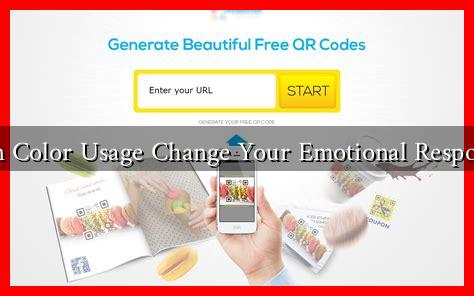-
Table of Contents
Can Color Usage Change Your Emotional Response?
Color is an integral part of our daily lives, influencing our moods, perceptions, and even behaviors. From the vibrant hues of a sunset to the calming shades of a hospital room, colors evoke emotional responses that can be both profound and subtle. This article explores the psychological effects of color, how it can alter emotional responses, and the implications for various fields such as marketing, design, and mental health.
The Psychology of Color
Color psychology is the study of how colors affect human behavior and emotions. Different colors can evoke different feelings, and understanding these associations can be beneficial in various contexts. Here are some common emotional responses associated with specific colors:
- Red: Often associated with passion, energy, and urgency. It can increase heart rates and stimulate excitement.
- Blue: Known for its calming effects, blue can evoke feelings of tranquility and trust. It is often used in corporate branding to convey reliability.
- Yellow: This bright color is linked to happiness and optimism. However, excessive yellow can lead to feelings of anxiety.
- Green: Symbolizing nature and growth, green is often associated with balance and harmony.
- Purple: Often linked to luxury and creativity, purple can inspire feelings of mystery and spirituality.
Case Studies and Research Findings
Numerous studies have demonstrated the impact of color on emotional responses. For instance, a study published in the journal *Color Research and Application* found that participants exposed to red light reported higher levels of excitement compared to those in blue light. Similarly, a study by the University of British Columbia revealed that people in a blue room were more creative than those in a red room, suggesting that color can influence cognitive processes as well as emotions.
In marketing, color plays a crucial role in consumer behavior. According to a study by the Institute for Color Research, up to 90% of snap judgments made about products can be based on color alone. Brands like Coca-Cola and Tiffany & Co. have effectively used color to create strong emotional connections with their audiences. Coca-Cola’s red is synonymous with excitement and happiness, while Tiffany’s iconic blue evokes feelings of luxury and exclusivity.
Color in Design and Environment
The use of color in design can significantly affect how people feel in a space. For example, hospitals often use soft blues and greens to create a calming environment for patients. In contrast, fast-food restaurants frequently employ bright colors like red and yellow to stimulate appetite and encourage quick dining.
Interior designers also leverage color psychology to create desired atmospheres in homes and workplaces. Here are some examples:
- Home Offices: Using blue can enhance focus and productivity.
- Living Rooms: Warm colors like orange can create a welcoming and energetic environment.
- Bedrooms: Soft, muted colors like lavender can promote relaxation and restful sleep.
Color and Mental Health
Color therapy, or chromotherapy, is an alternative treatment that uses colors to influence mood and emotional well-being. While scientific evidence is still emerging, many practitioners believe that specific colors can help alleviate symptoms of anxiety and depression. For instance, exposure to natural light and bright colors has been shown to improve mood and increase energy levels.
Moreover, art therapy often incorporates color as a means of expression and emotional exploration. Participants are encouraged to use colors that resonate with their feelings, providing insight into their emotional states and facilitating healing.
Conclusion
In conclusion, color usage can significantly change emotional responses, influencing everything from consumer behavior to mental health. Understanding the psychological effects of color can empower individuals and organizations to create environments that foster desired emotional states. Whether through marketing strategies, interior design, or therapeutic practices, the strategic use of color can enhance well-being and improve overall quality of life.
As we continue to explore the intricate relationship between color and emotion, it becomes increasingly clear that color is not just a visual experience but a powerful tool for emotional expression and connection.
For further reading on the psychology of color, you can visit Color Psychology.


